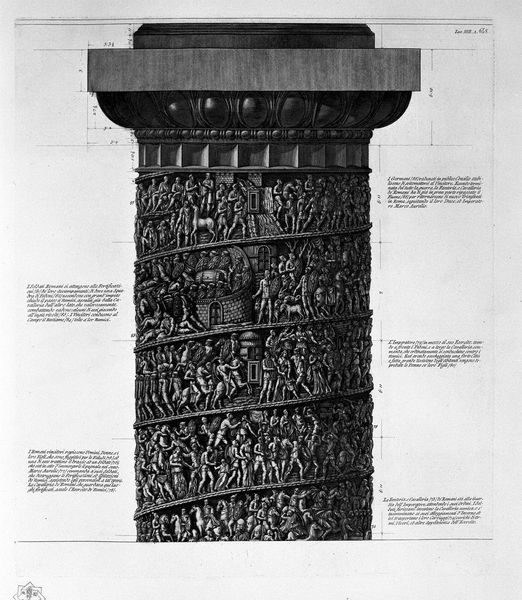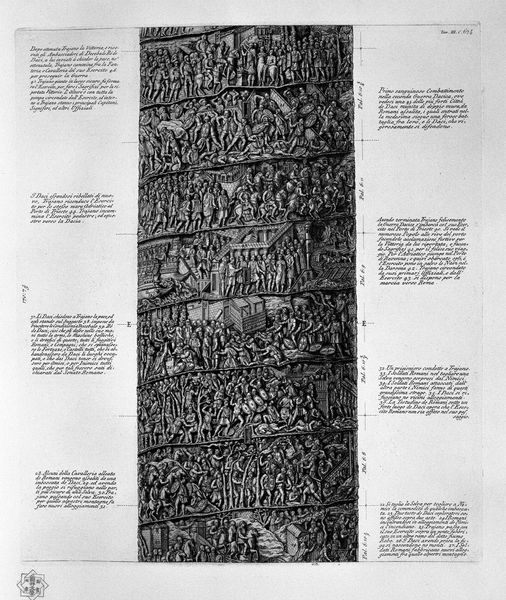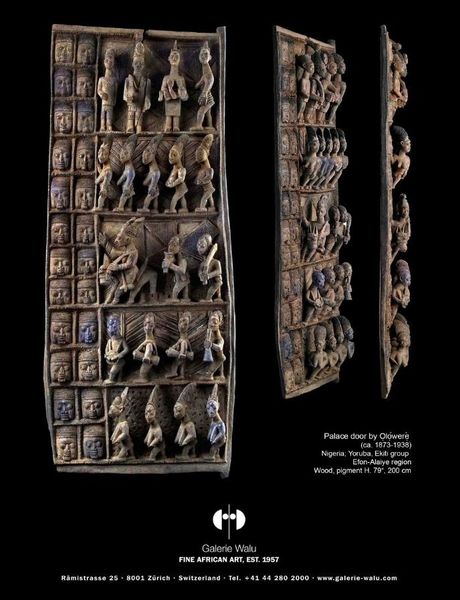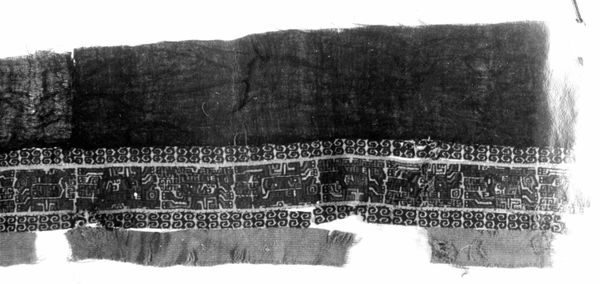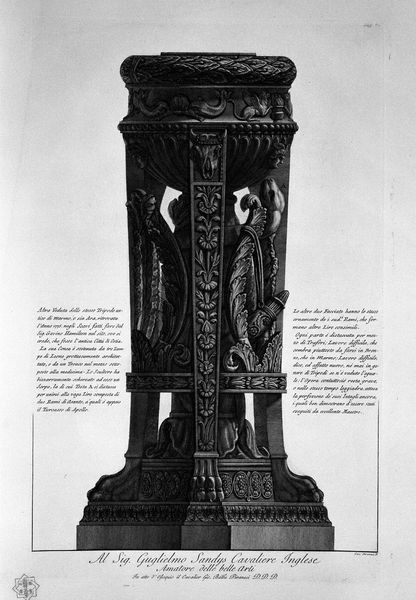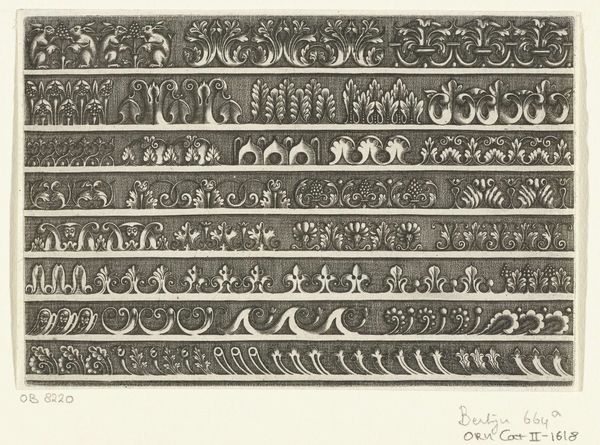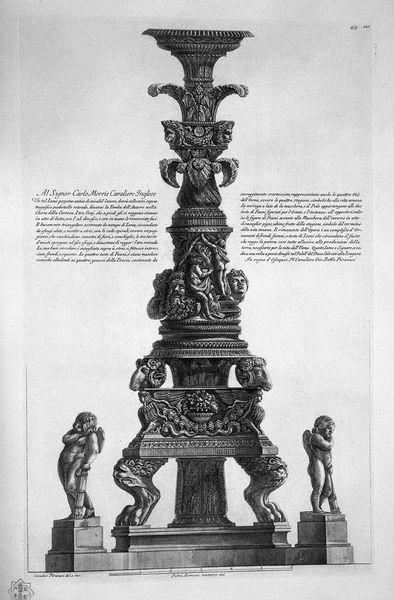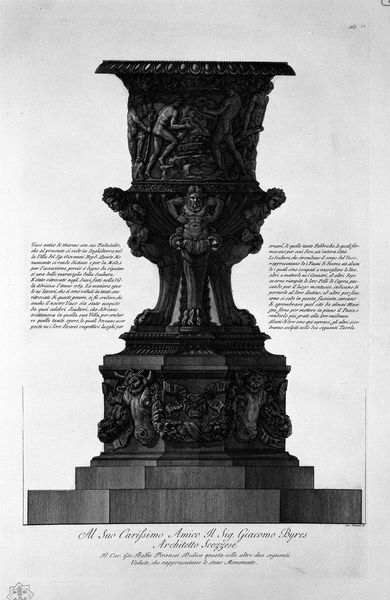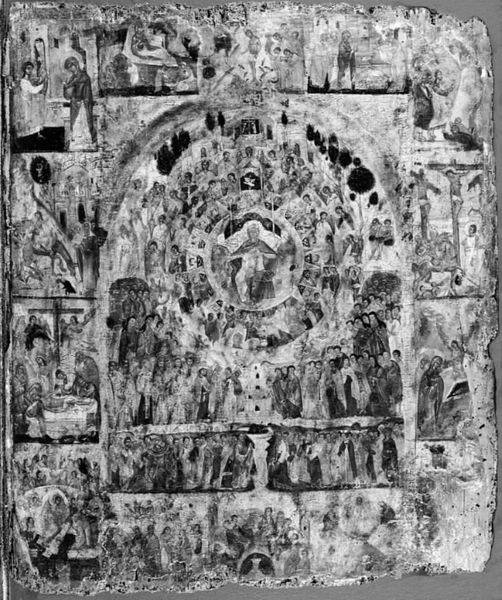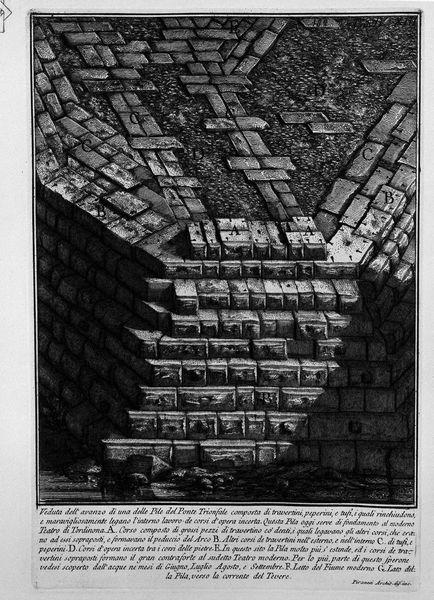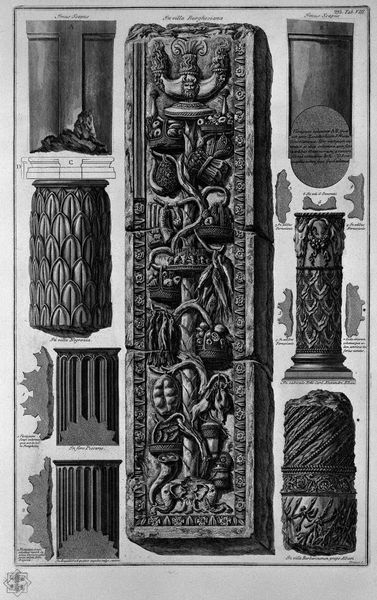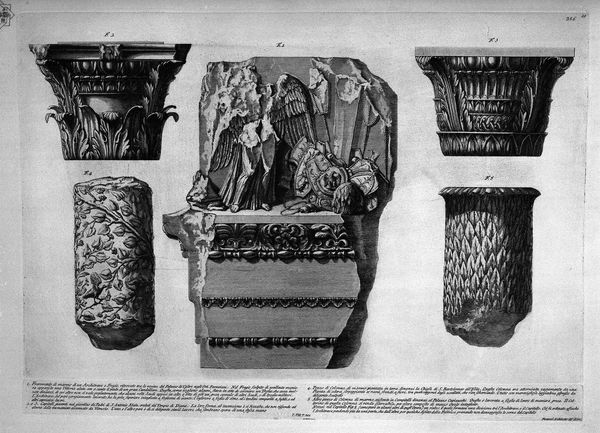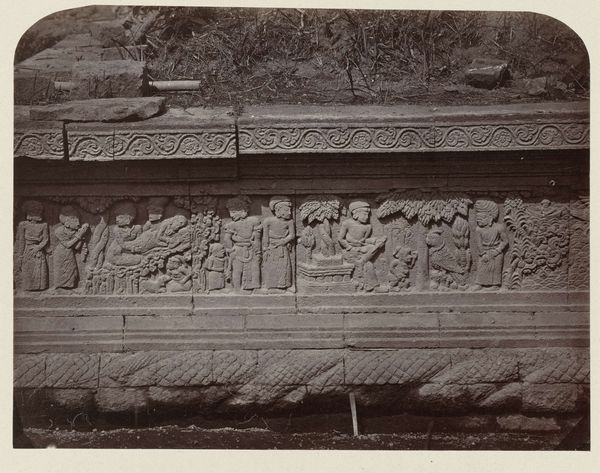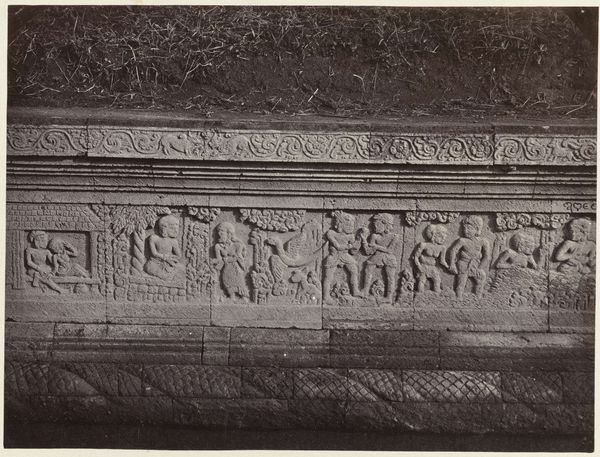
print, engraving, architecture
#
type repetition
# print
#
typographic composition
#
hand drawn type
#
legible
#
classical-realism
#
figuration
#
text
#
ancient-mediterranean
#
column
#
line
#
cityscape
#
history-painting
#
engraving
#
architecture
Copyright: Public domain
Curator: This engraving by Giovanni Battista Piranesi, titled *View of the Main Facade of the Antonine Column, in Six Tables,* strikes me as this incredible collision of history, artistry, and ego, frankly. What catches your eye? Editor: It's a lot to take in! I’m immediately struck by how much is going on. All those tiny figures spiraling up the column—it’s overwhelming but also makes you want to look closer. What exactly am I looking at, beyond the column itself? Curator: Well, you're seeing history etched in stone – and then re-etched in print! The Antonine Column, much like Trajan's, is this monumental record, a kind of visual victory parade frozen in time. Piranesi, though, he's not just documenting; he's dramatizing. Notice how he uses light and shadow to almost create a sense of theatricality. Editor: Definitely! It's so detailed. It’s easy to imagine all the work that went into designing and carving it. It's wild to see it presented as a print. Curator: Exactly! Think of Piranesi, centuries later, grappling with this massive, powerful symbol of Roman authority, and then reimagining it through his own artistic lens. Are the descriptive text blocks part of the drawing to you? Do you think the description informs the view? Editor: The text seems to float to the right. Because the type and text are so clear, and printed within a kind of vignette. . . it invites the eye. Like a tour guide whispering explanations while we gaze. It gives the picture context without taking us out of that powerful first impression. Curator: It's Piranesi giving the column a voice, after it spent centuries standing silently, witnessing history. Through this piece, he's inviting us to not just see it, but also listen. Editor: I’d never considered that. So much more to this than just a picture of a column. Curator: Absolutely, and that's the beauty of art, isn't it? It always holds more than what's immediately visible.
Comments
No comments
Be the first to comment and join the conversation on the ultimate creative platform.
